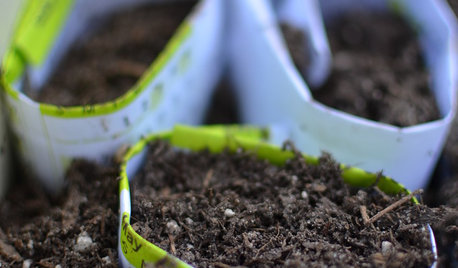How do I start an indoor garden in the desert?
keshka
14 years ago
Related Stories

GARDENING GUIDES10 Tips to Start a Garden — Can-Do Ideas for Beginners
Green up your landscape even if you're short on time, money and knowledge, with these manageable steps for first-time gardeners
Full Story
SOUTHWEST GARDENINGTexas and Desert Southwest Gardener's January Checklist
Since snow doesn't swirl in these parts, it's time to get fruit trees in the ground, check irrigation and color the garden with annuals
Full Story
MOST POPULARHow to Start a Cool-Season Vegetable Garden
Late summer and late winter are good times to plan and plant cool-season crops like salad greens, spinach, beets, carrots and peas
Full Story
GARDENING AND LANDSCAPINGCitrus 101: Start Your Own Backyard Orchard
This Earth Day Weekend, Add Some Green, Style and Deliciousness to Your Landscape
Full Story
GARDENING GUIDESHow to Stop Worrying and Start Loving Clay Soil
Clay has many more benefits than you might imagine
Full Story
GARDENING GUIDES6 Steps to Get a Garden Off to a Glowing Start
Grow a lush, balanced garden from an empty patch of yard or neglected landscape spot with these easy-to-follow guidelines
Full Story
GARDENING GUIDESSeeds or Seedlings? How to Get Your Garden Started
Growing delicious herbs and vegetables starts with knowing your goals and when you want to plant
Full Story
GARDENING GUIDESGet a Head Start on Planning Your Garden Even if It’s Snowing
Reviewing what you grew last year now will pay off when it’s time to head outside
Full Story
FARM YOUR YARD6 Things to Know Before You Start Growing Your Own Food
It takes time and practice, but growing edibles in the suburbs or city is possible with smart prep and patience
Full Story
HOUSEPLANTSHow to Grow Orchids Indoors
Orchids are the exotic aristocrats of the flower world and can make themselves comfortable in almost any home
Full StoryMore Discussions






klinko16
keshkaOriginal Author
Related Professionals
Manhattan Beach Landscape Architects & Landscape Designers · Amesbury Landscape Contractors · Clayton Landscape Contractors · Fridley Landscape Contractors · Hampton Bays Landscape Contractors · Merced Landscape Contractors · Petaluma Landscape Contractors · Rio Linda Landscape Contractors · Vallejo Landscape Contractors · Whitehall Landscape Contractors · Goldenrod Landscape Contractors · Merrifield Landscape Contractors · East Haven Fence Contractors · Kirkland Fence Contractors · Wichita Roofing & Guttersklinko16
Karen Pease
Karen Pease
keshkaOriginal Author
Karen Pease